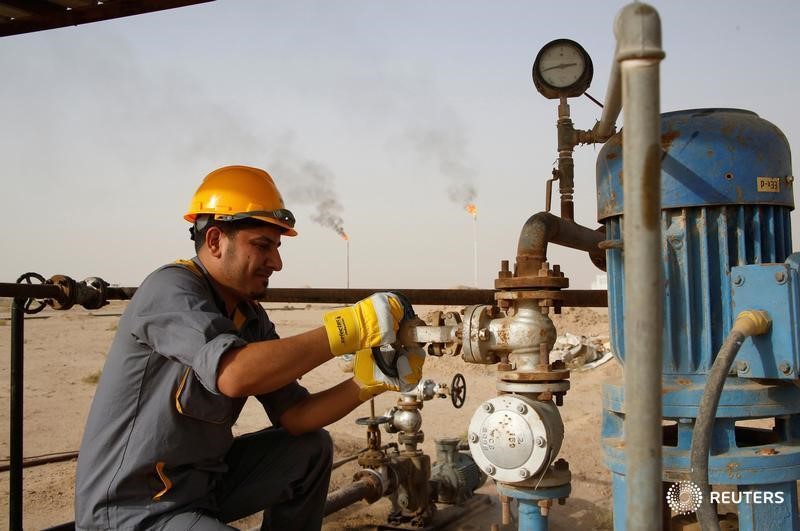© Reuters.
The ongoing Israel-Hamas conflict, potential Iranian involvement, OPEC+ production cuts, and the Russia-Ukraine conflict are contributing to a significant rally in Oil (CL1:COM) prices and gold (GLD (NYSE:)). This situation has led to a surge towards $90 per barrel oil prices, favoring companies like Halliburton (NYSE:). Amid these market fluctuations, Halliburton reported $11.5 billion in revenue for 2023, marking a 22% rise from 2022, and is projected to experience a 40% profit growth.
In response to the escalating Middle East tensions and potential broader conflict, Barclays’ Equity Research highlighted notable repricing in oil’s call wings. The report noted that 1M OTM call vols have transitioned from under to above ATM volatility within the span of just a week. Barclays emphasized the crucial role of Israel’s reaction to Iran’s involvement in shaping future oil market movements and warned investors about risk-off amid an extended conflict.
To mitigate these risks, Barclays suggested that investors could adopt hedging strategies such as equity puts contingent on higher oil or Dec. 23 dual digitals. They advocated for a nine-to-one payout approach with (SX5E) below 95% and USO (NYSE:) surpassing 103%. For those not anticipating a full escalation in the Middle East, Barclays pointed out an opportunity to profit from richer tails via call spread collars.
Meanwhile, Halliburton has demonstrated financial resilience by increasing its annual dividend to $0.64 and authorizing a $4.7 billion stock repurchase. According to InvestingPro, the company has maintained dividend payments for 53 consecutive years, demonstrating a strong commitment to shareholder returns. Furthermore, Halliburton’s stock price has seen a large uptick over the last six months, as confirmed by InvestingPro data showing a 27.84% six-month price total return. The company is nearing its pre-pandemic peak of $74.33, aided by its collaboration with Core Laboratories (NYSE:) and the application of new AI technologies aimed at enhancing productivity and efficiency.
InvestingPro also highlights Halliburton’s consistent increase in earnings per share and its high return on invested capital. It notes that the company is trading at a low P/E ratio relative to near-term earnings growth – with a P/E ratio of 15.8, indicating potential undervaluation. These factors, along with the fact that the company’s liquid assets exceed its short-term obligations, suggest that Halliburton may be a robust investment choice in the current volatile market.
JP Morgan’s CEO has described the present as the most dangerous global times in decades, suggesting both risk and potential rewards for the energy sector. Investors are eagerly awaiting Halliburton’s Q3 update and considering its undervalued stock as a long-term investment opportunity amidst the rising oil prices and geopolitical uncertainties.
For those interested in more comprehensive insights and metrics, InvestingPro offers numerous additional tips and real-time metrics for a variety of companies. You can access these by subscribing to their premium service.
This article was generated with the support of AI and reviewed by an editor. For more information see our T&C.
Read the full article here
